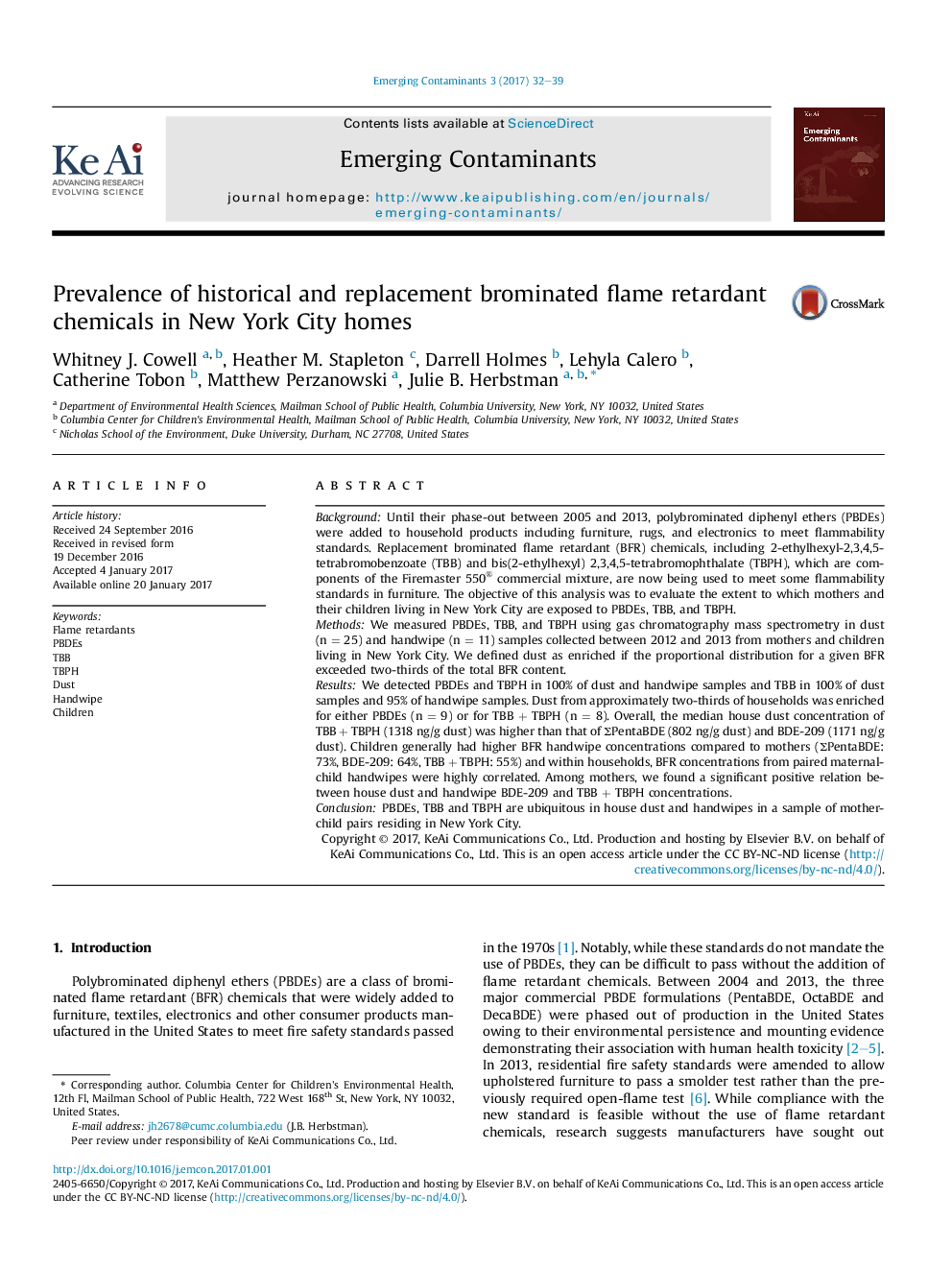| کد مقاله | کد نشریه | سال انتشار | مقاله انگلیسی | نسخه تمام متن |
|---|---|---|---|---|
| 5748148 | 1412450 | 2017 | 8 صفحه PDF | دانلود رایگان |
BackgroundUntil their phase-out between 2005 and 2013, polybrominated diphenyl ethers (PBDEs) were added to household products including furniture, rugs, and electronics to meet flammability standards. Replacement brominated flame retardant (BFR) chemicals, including 2-ethylhexyl-2,3,4,5- tetrabromobenzoate (TBB) and bis(2-ethylhexyl) 2,3,4,5-tetrabromophthalate (TBPH), which are components of the Firemaster 550® commercial mixture, are now being used to meet some flammability standards in furniture. The objective of this analysis was to evaluate the extent to which mothers and their children living in New York City are exposed to PBDEs, TBB, and TBPH.MethodsWe measured PBDEs, TBB, and TBPH using gas chromatography mass spectrometry in dust (n = 25) and handwipe (n = 11) samples collected between 2012 and 2013 from mothers and children living in New York City. We defined dust as enriched if the proportional distribution for a given BFR exceeded two-thirds of the total BFR content.ResultsWe detected PBDEs and TBPH in 100% of dust and handwipe samples and TBB in 100% of dust samples and 95% of handwipe samples. Dust from approximately two-thirds of households was enriched for either PBDEs (n = 9) or for TBB + TBPH (n = 8). Overall, the median house dust concentration of TBB + TBPH (1318 ng/g dust) was higher than that of ΣPentaBDE (802 ng/g dust) and BDE-209 (1171 ng/g dust). Children generally had higher BFR handwipe concentrations compared to mothers (ΣPentaBDE: 73%, BDE-209: 64%, TBB + TBPH: 55%) and within households, BFR concentrations from paired maternal-child handwipes were highly correlated. Among mothers, we found a significant positive relation between house dust and handwipe BDE-209 and TBB + TBPH concentrations.ConclusionPBDEs, TBB and TBPH are ubiquitous in house dust and handwipes in a sample of mother-child pairs residing in New York City.
Journal: Emerging Contaminants - Volume 3, Issue 1, March 2017, Pages 32-39
